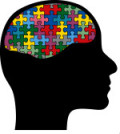“Non-drug interventions would be an enormous step forward in drug abuse treatment, which currently relies on replacing one drug with another and has an extremely high rate of relapse,” said press conference moderator Barry Everitt of the University of Cambridge, an expert in drug abuse research.That high rate of relapse, which was recently discussed at Neuroscience 2013 (the annual meeting of the society of Neuroscience and the world’s largest source of emerging news about brain science and health) might be an offshoot effect of the fact that, according to the World Health Organization, 15.3 million people worldwide are suffering from some form of drug addiction disorder. Fortunately, those at Neuroscience were pleased to release recent findings that may very well for the first time begin helping cut that number down.
According to an article released by Medical News Daily, it was found that, among other things:
“stimulating an area of the brain associated with drug reward, the sub-thalamic nucleus, reduces rats’ motivation to take heroin. [However], chronic pain leads rats already exposed to drug to take more and higher doses of heroin, suggesting that people with addiction are more susceptible to overdose when in chronic pain.”
What we already know is that drug abuse and its consequences is in and of itself inherently stressful and damaging to the brain. Abuse can set off a cyclical pattern whereby the user is taking drugs (heroin, for example) to stave off negative emotions and pain, only to find themselves worse off than before, but nevertheless stuck in a downward spiral. Researchers are hoping that the discovery of these areas of the brain will help future studies come up with more effective means of treating drug addiction.
One way might be for those suffering from chronic pain to seek out alternative means of treatment, such as acupuncture, local electrical stimulation, brain stimulation, or simply finding a treatment or rehabilitation center whose methods are more cognitive than medication-based.
Everitt goes on to say, “Today’s exciting results give us new ways of understanding why compulsive conditions such as drug abuse and pathological gambling arise, and give us targets to explore for non-drug treatment, which would help us treat a population suffering from addiction.”
What do you think?








